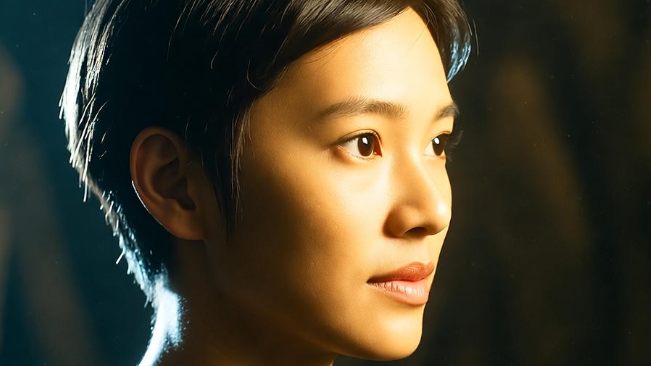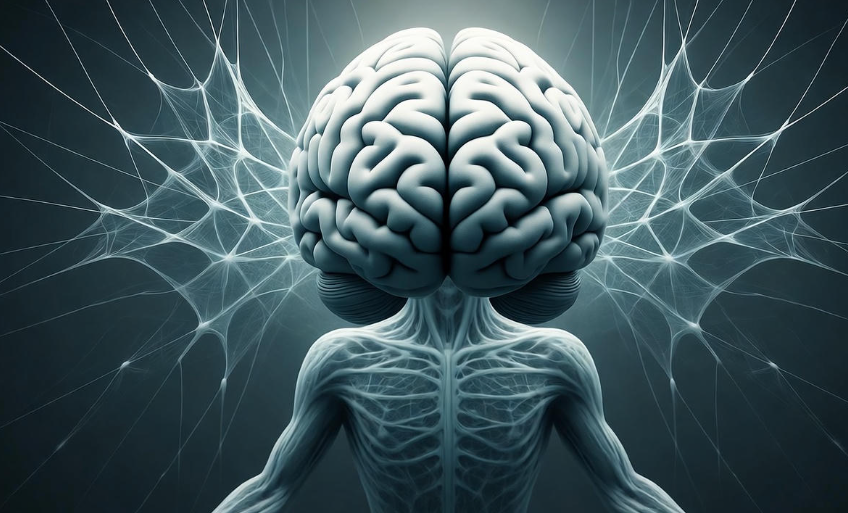Have you ever wondered why humans crave connection so deeply? 🤔 Why we form friendships, build societies, and depend on each other to survive? The answer lies deep within our DNA — in the science of human social evolution.
This fascinating journey didn’t happen overnight. It’s the story of how ancient instincts, brain chemistry, and survival needs slowly shaped humans into the most social species on Earth. Let’s break it down — simply, scientifically, and a bit personally.
What Social Evolution Really Means
At its core, social evolution means the gradual development of social behaviors and systems in living beings. For humans, it’s how we moved from small family groups of hunters and gatherers to complex civilizations with governments, education, and shared cultures.
Unlike animals who rely on instinct alone, humans built emotional, moral, and cooperative systems — the “social glue” that keeps societies together. 🧠✨
The Beginning of Human Connection
Long before cities, before farming, before writing — humans lived in small bands. Cooperation wasn’t just nice; it was survival. Early humans hunted in groups, protected each other from predators, and shared food. Those who could communicate, empathize, and work together were more likely to survive and pass on their genes.
That’s where it all started — evolution favored the social.
| Era | Key Development | Social Impact |
|---|---|---|
| Early Hominins (2-3 million years ago) | Group hunting, basic communication | Trust and cooperation form |
| Homo erectus (~1.8 million years ago) | Use of fire and shared meals | Bonding and group safety |
| Homo sapiens (~300,000 years ago) | Language, art, rituals | Culture and identity emerge |
| Agricultural Revolution (~10,000 years ago) | Farming and settlements | Permanent social structures |
The Brain: Nature’s Social Machine
The human brain didn’t just grow bigger — it grew smarter at understanding others. Modern neuroscience shows that our prefrontal cortex and mirror neurons are key players in empathy, morality, and communication.
-
The prefrontal cortex helps us plan, cooperate, and understand social rules.
-
Mirror neurons allow us to feel what others feel — the biological root of empathy.
Ever yawned when you saw someone else yawn? That’s mirror neurons at work! 😄
The brain literally rewards social connection. When you laugh with friends or help someone, your brain releases dopamine and oxytocin, the “happy chemicals.” These feelings motivated early humans to stay close and cooperate.
Language: The Superpower That Changed Everything
Without language, cooperation would have limits. Words gave humans a way to share ideas, warn others, and tell stories.
Anthropologists believe storytelling helped early humans remember survival lessons, strengthen trust, and pass on traditions. Imagine a campfire thousands of years ago — one person telling a hunting story while others listen. That’s not just bonding; it’s the foundation of human culture. 🔥
From Tribes to Kingdoms: Expanding the Social Circle
As human groups grew, so did social complexity. Cooperation needed rules — and from there came leadership, ethics, and community identity.
People began forming tribes, villages, and later cities. Agriculture allowed stable food supplies, which supported larger populations. But bigger groups meant more conflicts — so humans developed systems of justice, religion, and law to maintain order.
| Stage | Key Social Shift | Example |
|---|---|---|
| Tribal Groups | Kinship and shared resources | Hunter-gatherer clans |
| Agricultural Villages | Property and leadership | Ancient Mesopotamia |
| Early Civilizations | Hierarchies and governance | Egypt, Indus Valley |
| Modern Societies | Complex institutions | Democracies, economies |
Every stage of this expansion built upon the previous one. What began as instinctive cooperation turned into organized social structures.
The Role of Emotions in Social Evolution
Humans evolved not only to think — but to feel deeply.
Emotions like love, guilt, pride, and empathy shaped moral and social behavior.
-
Love strengthened family and group bonds.
-
Guilt encouraged people to correct mistakes and maintain trust.
-
Pride motivated individuals to contribute to the group.
These emotions are biological tools for social survival. Without them, we might still be wandering alone in the wilderness. 🌍💞
Culture: The Software of Social Evolution
If genes are the hardware, culture is the software. It changes faster than biology but serves the same purpose — helping humans adapt.
Culture gave us art, music, belief systems, and shared values. It’s what allows a child born in Japan or Brazil to grow into a completely different worldview — yet still be fully human.
Through cultural transmission, knowledge passed from one generation to another.
That’s why we don’t have to rediscover fire or reinvent language — our ancestors handed these down through social learning.
The Rise of Cooperation and Altruism
From an evolutionary view, helping others might seem risky. But over time, nature rewarded cooperative behavior because it benefited the group.
Biologists call this “reciprocal altruism” — helping others now increases the chance they’ll help you later.
For example:
-
In early tribes, hunters shared meat knowing that one day, others would do the same.
-
In modern life, we share knowledge, skills, or kindness — and communities grow stronger.
This kind of mutual help was the real secret behind human success. No species has achieved large-scale cooperation like humans have. 🧩
Social Evolution and Technology
Technology didn’t replace human connection — it expanded it. From smoke signals to social media, each step transformed how we relate.
But here’s the twist: our brains evolved for face-to-face bonding, not digital overload. So while tech connects billions, it can also cause isolation if misused. The balance between real and virtual relationships is now a key part of our modern social evolution.
| Technological Stage | Social Impact |
|---|---|
| Writing and Printing | Preserved ideas, enabled civilizations |
| Industrial Age | Urban societies, social mobility |
| Digital Age | Global communication, cultural blending |
| AI & Virtual Era | Redefining identity and empathy |
Gender and Family Evolution
Human social structures have always revolved around family and gender roles.
In early societies, tasks often split by physical needs — hunting, gathering, child-rearing. But as cultures evolved, these roles diversified.
Today, we see ongoing social evolution as gender equality and family systems adapt to new norms. The ability to redefine roles and cooperate flexibly is another mark of human intelligence.

How Morality Evolved
Where did our sense of right and wrong come from?
Scientists say morality isn’t purely cultural — it’s evolutionary. Behaviors that helped groups survive (like fairness and loyalty) became ingrained as moral instincts.
Studies even show that primates and dolphins display basic forms of empathy and fairness. Humans took it further by creating moral codes and religions to formalize these instincts.
So, our morals are not random. They’re ancient survival tools wrapped in culture and emotion. ⚖️
The Future of Human Social Evolution
The story doesn’t end here. Social evolution continues — faster than ever. Globalization, migration, artificial intelligence, and environmental change are reshaping how we connect.
We’re now evolving socially and digitally at the same time.
The next steps might include:
-
Virtual empathy: understanding emotions across screens.
-
Global morality: caring beyond national or racial boundaries.
-
Human-AI cooperation: blending natural and artificial intelligence in communities.
Humanity’s next chapter will test how flexible and compassionate our social evolution really is.
Quick Recap Table: The Key Drivers of Human Social Evolution
| Factor | Description | Impact |
|---|---|---|
| Brain Development | Growth of empathy and reasoning areas | Complex cooperation |
| Language | Symbolic communication | Shared knowledge |
| Culture | Transfer of traditions and ideas | Identity and adaptability |
| Emotion | Biological motivator for bonding | Group cohesion |
| Technology | Tools for communication | Expansion of social networks |
| Morality | Evolutionary sense of fairness | Social order |
Why Social Evolution Still Matters Today
Understanding our social roots helps us make sense of modern life.
When we argue online, form friendships, or seek belonging — it’s all part of a pattern millions of years old.
Social problems today (loneliness, division, inequality) are not new; they’re just modern versions of ancient survival challenges.
By studying the science of social evolution, we can learn how to rebuild stronger, kinder communities — both offline and online. 🌐💬
Fun Facts About Human Social Evolution
-
Humans are the only species that blush — a sign of self-awareness and social sensitivity.
-
Oxytocin, the “love hormone,” strengthens trust and reduces fear between individuals.
-
Storytelling activates more parts of the brain than plain facts — that’s why it’s so powerful in bonding.
-
Shared laughter creates more group connection than shared meals! 😂
-
Cooperation, not competition, is the reason humans dominate the planet.
FAQs
Q1: What is human social evolution in simple terms?
It’s how humans developed social behaviors like cooperation, empathy, and communication over time — allowing us to build families, cultures, and societies.
Q2: Why did humans become social animals?
Because survival depended on teamwork. Those who cooperated were more likely to survive harsh environments and pass on their genes.
Q3: What role does the brain play in social behavior?
The human brain evolved special regions for empathy, planning, and communication — making social understanding a key survival trait.
Q4: How is social evolution different from cultural evolution?
Social evolution is biological and behavioral; cultural evolution is about learned traditions and ideas. They work together but evolve at different speeds.
Q5: Are humans still evolving socially?
Yes! Technology, globalization, and modern ethics are constantly reshaping how we connect and define relationships.
Q6: What is the biggest lesson from human social evolution?
That cooperation and empathy are not weaknesses — they are the strongest forces behind human survival and progress.
Final Thoughts
The science behind human social evolution shows one clear truth:
Humans didn’t rise because they were the strongest or fastest — but because they were the most connected.
Every smile, handshake, friendship, or act of kindness is a small echo of the same ancient drive that once helped us survive the wild. 🌿
Our social evolution is still unfolding — and each of us plays a part in where it goes next.

Leave a Reply